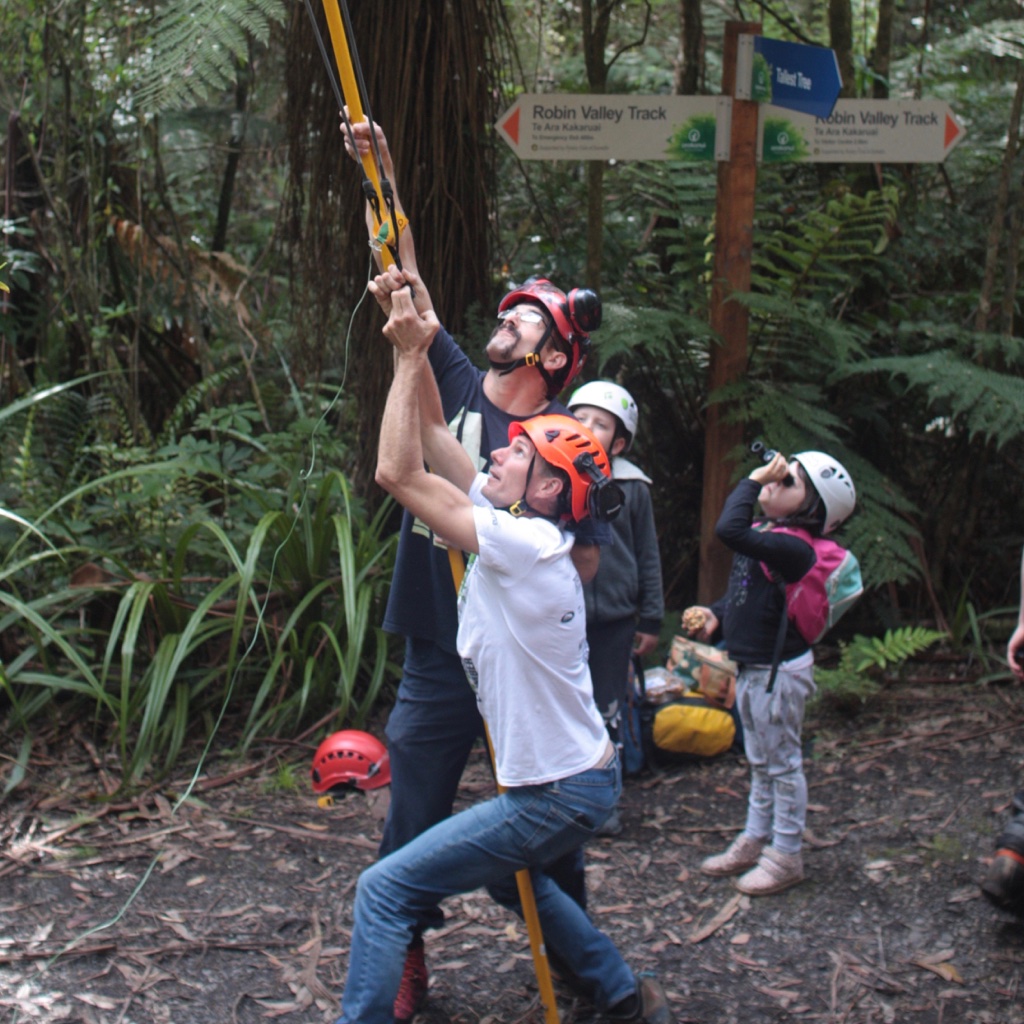The tallest tree in New Zealand grows quietly in the Orokonui Ecosanctuary, just north of Dunedin.
It (she), doesn’t have the grandeur or the mana of Tane Mahuta and his whanau, even though she would tower 30m (100ft) or more above them. She is a slender wee thing (relatively speaking), yet she is not graceful like kahikatea, or cultured like rimu, she is a new-comer, she is Australian.
New Zealand’s tallest tree is a mountain ash, (Eucalyptus regnans) and for many years she sat silently robbed of her title. The previous tallest recorded tree was as another mountain ash less that 500 metres way – the Frank Pepers tree.
In 1982 Frank Pepers was working for the NZ Forest Service. He was measuring trees in the Orokonui Valley, and he singled out a tall tree; one of many tall trees, surrounded by tall trees. He measured this tree and the record was set. The Frank Pepers tree was the tallest tree in New Zealand. His tree was climbed and measured several times over, and at 77m (250ft) tall, you wouldn’t call it short – unless you were taller.
In 2012, American tree surveyors from Washington State – the home of the giant coastal redwoods, (Sequoia sempervirens) came to visit the Frank Pepers tree. They saw, they measured and they singled out another tall tree; one of many tall trees, surrounded by tall trees. Their tree was taller – this tree, our tree, was 80.5m (265ft) tall; the record was re-set.
But how tall is it now, is she getting taller and what could be seen from the top?
Our tree is in Orokonui Ecosanctuary. The sanctuary is an active conservation zone and a successful breeding ground for many rare and endangered native species. The sanctuary is about 307 hectares and completely enclosed by a pest exclusion fence. Head ranger Elton Smith pointed out that pest exclusion is the ideal, but predator proofing can never be achieved; ‘by creating a successful ecosystem we face the reality of natural predation, we had a situation where kiwi were finding and eating tuatara eggs – we are still not sure how we measure success in a situation like that’.
Our tree is about a 45 minute walk from the visitors centre down into the valley below. On a beautiful spring morning three time International Tree Climbing Champion Scott Forrest and a committed crew of young arborists from the Otago polytechnic went into the sanctuary to measure her. Scott was in Dunedin, having just won his fifth national tree climbing title at the 2018 NZ Arboriculture Association Husqvarna National Tree Climbing Championships.
You don’t just rock-up and climb a tree like this one, it requires permission, gear checks, safety plans, several hundred metres of climbing line, an extremely long tape measure and an enormous slingshot.

We were dropped off at the bottom of the sanctuary and made our way in. As technical climbs go, it is not that hard, she is just big. It took us about 40 minutes to set a line over the first branch (35.3m above the forest floor). It was always going to be a multi-pitch climb, so once we got into the canopy additional access lines were installed and climbing lines were hauled up. We used single-line access techniques to ensure minimal damage was caused and once we got to point where the branches were too thin to support us, the tape measure was attached to a stick and lifted to the very top. 82.25 metres from tip to toe, and unlike from the top of the Frank Pepers tree there is a view. The bird song was amazing and the sense of connection was remarkable. Then down we went, job done.
She is indeed a notable tree, at 82.25m (275ft)she is still growing and by the look of her there is nothing to suggest she will slow down anytime soon.
0 Comments